
error plots for the PET-MAD-DOS model on different datasets
Anticipating 🧑🚀 Wei Bin's talk at #psik2025 (noon@roomA), 📢 a new #preprint using PET and the MAD dataset to train a universal #ml model for the density of states, giving band gaps for solids, clusters, surfaces and molecules with MAE ~200meV. Go to the talk, or check out arxiv.org/html/2508.17...!
28.08.2025 07:19 — 👍 3 🔁 2 💬 0 📌 0
First, we generate a pool of candidate structures and then select the one whose calculated chemical shieldings best match the experimental measurements. Because shielding calculations quickly become the computational bottleneck, machine-learning (ML) models can substantially reduce the cost.
25.08.2025 08:53 — 👍 0 🔁 0 💬 1 📌 0
Solid-state NMR spectroscopy is increasingly used for structure determination of organic solids. NMR-based structure determination differs from conventional diffraction methods:
25.08.2025 08:53 — 👍 1 🔁 0 💬 1 📌 0
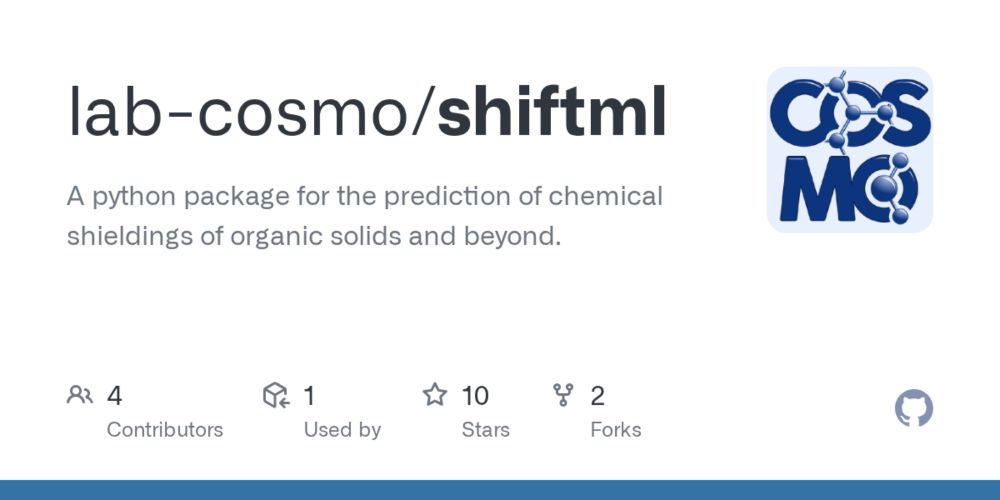
GitHub - lab-cosmo/shiftml: A python package for the prediction of chemical shieldings of organic solids and beyond.
A python package for the prediction of chemical shieldings of organic solids and beyond. - lab-cosmo/shiftml
We're introducing ShiftML3, a new ShiftML model for chemical shielding predictions in organic solids.
* ShiftML3 predicts full chemical shielding tensors
* DFT accuracy for 1H, 13C, and 15N
* ASE integration
* GPU integration
Code: github.com/lab-cosmo/Sh...
Install from Pypi: pip install shiftml
25.08.2025 08:53 — 👍 2 🔁 3 💬 1 📌 0

metatensor logo

metatomic logo
🚨 #machinelearning for #compchem goodies from our 🧑🚀 team incoming! After years of work it's time to share. Go check arxiv.org/abs/2508.15704 and/or metatensor.org to learn about #metatensor and #metatomic. What they are, what they do, why you should use them for all of your atomistic ML projects 🔍.
22.08.2025 07:40 — 👍 10 🔁 7 💬 1 📌 2
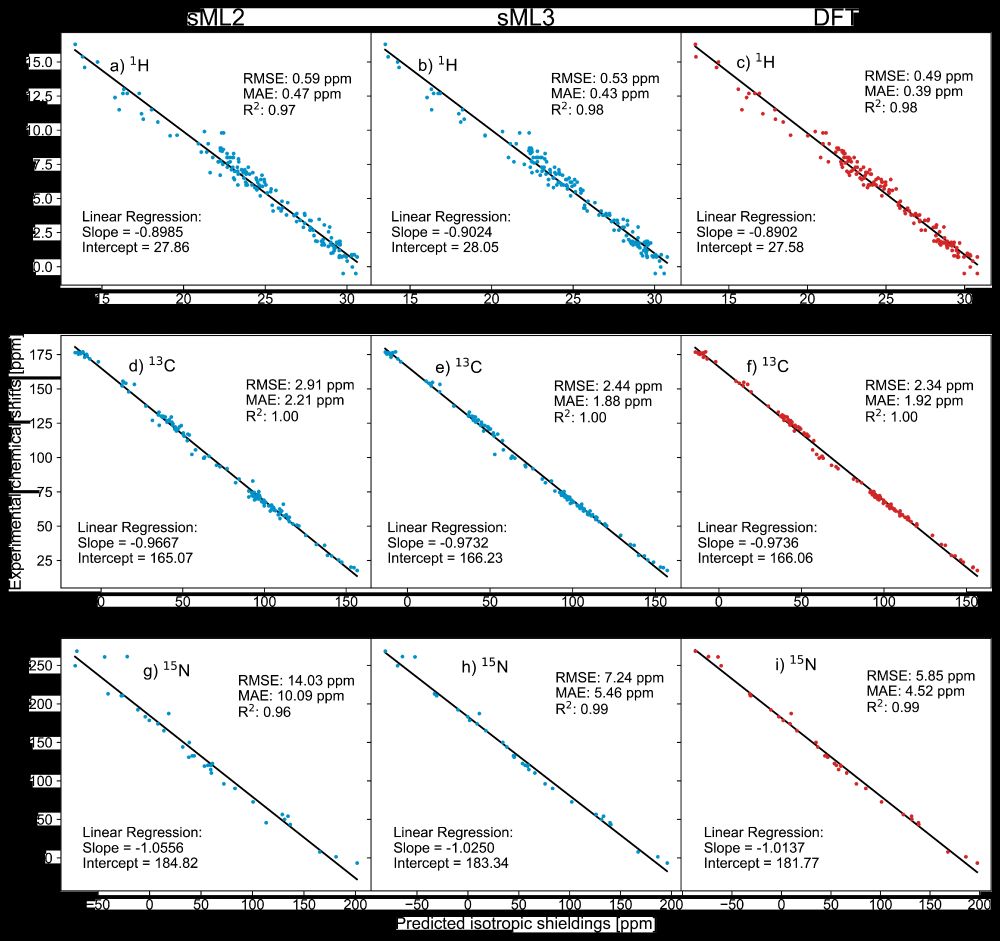
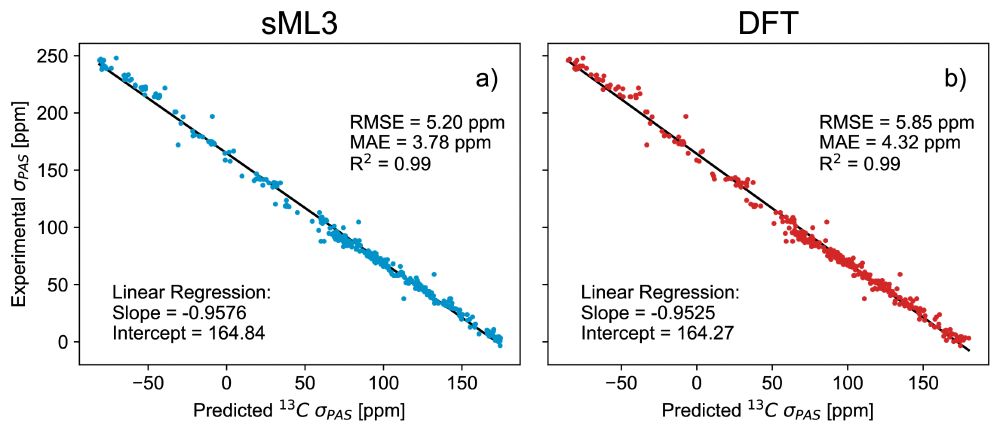
🎉 DFT-accurate, with built-in uncertainty quantification, providing chemical shielding anisotropy - ShiftML3.0 has it all! Building on a successful @nccr-marvel.bsky.social-funded collaboration with LRM🧲⚛️, it just landed on the arXiv arxiv.org/html/2506.13... and on pypi pypi.org/project/shif...
17.06.2025 13:18 — 👍 18 🔁 7 💬 1 📌 0
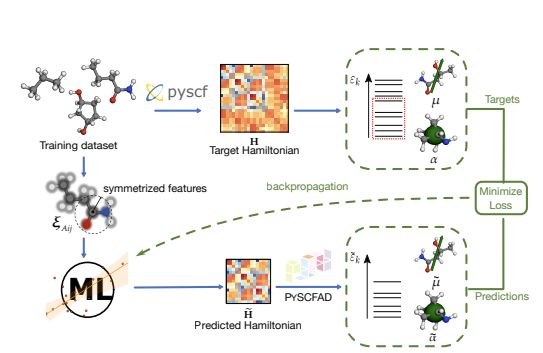
A schematic of the functioning of a ML/QM hybrid framework
When you combine #machinelearning and #compchem, you need to start worrying at the QM details within your ML architecture. We use our indirect Hamiltonian framework and pySCFAD to explore the enormous design space arxiv.org/abs/2504.01187
03.04.2025 21:30 — 👍 14 🔁 4 💬 2 📌 0
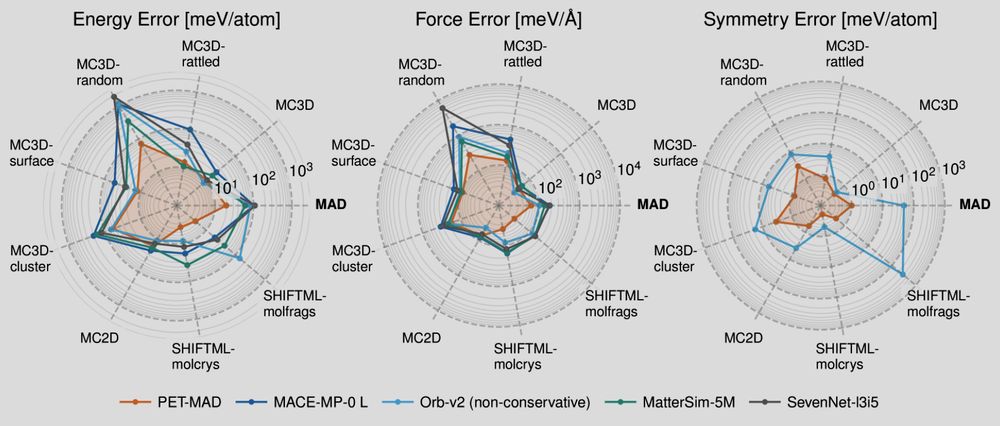
Polar plot showing the errors of several machine-learning potential of different test sets. Smaller is better here!

Plots showing the evaluation time per atom for several machine-learning potentials as a function of the number of atoms in a simulation. Smaller is better
📢 PET-MAD has just landed! 📢 What if I told you that you can match & improve the accuracy of other "universal" #machinelearning potentials training on fewer than 100k atomic structures? And be *faster* with an unconstrained architecture that is conservative with tiny symmetry breaking? Sounds like 🧑🚀
19.03.2025 07:23 — 👍 28 🔁 9 💬 1 📌 3

Header of the webpage showing the title ("Atomistic Water model for MD") and the authors (Philip Loche, Marcel Langer, Michele Ceriotti)
Happy to share a new #cookbook recipe that shocases several new software developments in the lab, using the good ole' QTIP4P/f water model as an example. atomistic-cookbook.org/examples/wat.... TL;DR - you can now build torch-based interatomic potentials, export them and use them wherever you like!
28.02.2025 12:58 — 👍 12 🔁 5 💬 1 📌 0
Feeling a bit lonely here ...
15.11.2024 11:38 — 👍 0 🔁 0 💬 0 📌 0
Postdoctoral researcher at Dept. Physical Chemistry and Macromolecular Chemistry in Charles University Prague
Computational chemist with a Bayesian taint. Working on foundational cross-language tools at @labcosmo.bsky.social.
More @ https://rgoswami.me
Condensed matter physicist working with machine learning, PhD at SISSA and currently a post-doc in Ecole Polytechnique Fédérale de Lausanne at
@labcosmo.bsky.social
Computational chemist, curious about the atomic-scale structure of materials & ML for chemistry. Professor of Materials Chemistry at the University of Oxford
Computational chemist at @iocbprague.bsky.social
#MachineLearning editor at @iopp-mlresearch.bsky.social (@ioppublishing.bsky.social). Theoretical chemist. LEGO fan. #DFT #compchem #chemistry #DogsofCompChem #Quantum
Proud member of #ChemSky
Personal+work account (all views my own)
📍Buffalo, NY
Discover our #openaccess journals devoted to the application and development of #MachineLearning and #ArtificialIntelligence for the sciences, health, earth and engineering.
ML Series: https://bit.ly/3FUYyNe
AI for Science: https://bit.ly/3QZlflu
Mongolian, machine-learned interatomic potentials and cellular biophysics
Italian in Switzerland, @lab_COSMO PI. Husband of one, father of three. Increasing the entropy of the universe since 1982.
Official Twitter for the Gómez-Bombarelli group at MIT DMSE | We use atomistic simulations and ML for accelerated materials design | Managed by group members.
http://gomezbombarelli.mit.edu
Chemistry professor at CMU. Connecting chemical sciences with AI #MachineLearning and automated experimentation. #tarheels fan. Care: #design, #photography #Ukraine #cats🐈 Rants are mine
Computational chemistry professor at @unistuttgart.bsky.social simulating reaction mechanisms, atom tunneling, astrochemistry, MachineLearning.
https://www.uni-stuttgart.de/theochem/kaestner
she / her • assistant professor of chemistry at UChicago • quantum dynamics of (nano)materials • jasrasariagroup.com
Researcher in machine learning
PhD candidate @TUDarmstadt 🧪👩🏼🔬
ESN volunteer 🌈🇪🇺
Computational Chemist. 🦀🐍 Scientist at BAM
+ Professor FSU Jena. Only private opinions here.
Last name: German pronunciation. 🏳️🌈 she/they (sie).
@JaGeo on github










